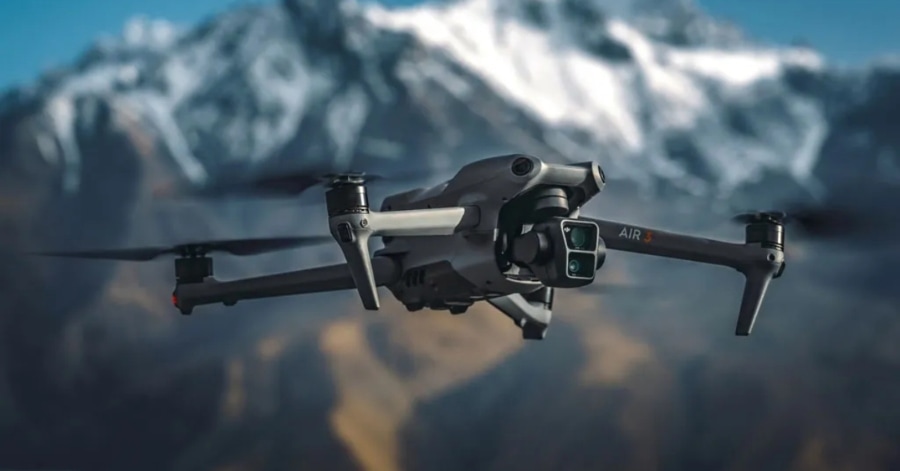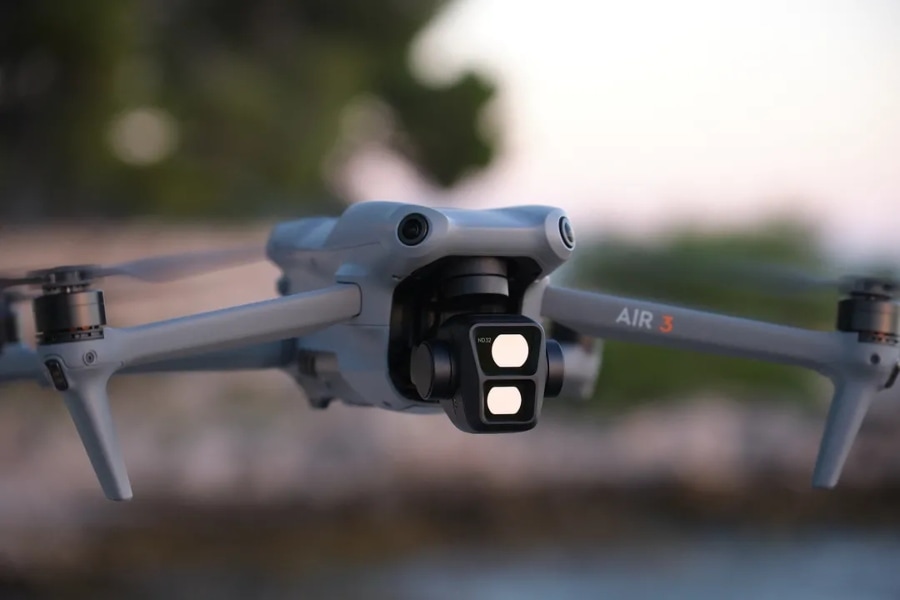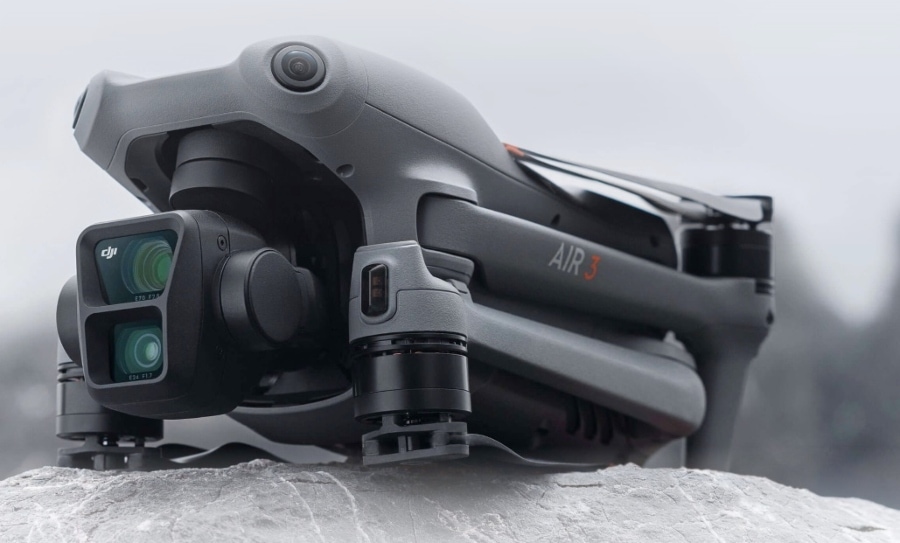DJI Launches the Air 3, A Dual-Camera Follow Up to the Air 2S
BY Zacc Dukowitz
1 August 2023After a series of leaks revealed almost everything there was to know about it, the DJI Air 3 is finally here.
The Air 3 comes with a dual camera system, 46 minutes of flight time, a brand new controller, and a redesigned look similar to the Mavic 3.
Pricing starts at $1,099 for the Air 3, making it a solid prosumer option for those who want high quality drone footage but aren’t ready to spend the $2,000+ a Mavic 3 will run you.
What’s Different on the Air 3?
The last drone in the DJI Air series was the Air 2S, which came out in April of 2021.
Launching over two years later, the Air 3 does have noticeable improvements. But they come with a higher price tag—the Air 2S starts at $799 while the Air 3 starts $300 higher, at $1,099.


Credit: DJI
The biggest upgrade on the Air 3 is its dual camera system.
While the Air 2S has only one camera, the Air 3 has two—a wide-angle and a tele. But the two CMOS sensors on the Air 3 are smaller than the one CMOS sensor on the Air 2S, coming in at 1/1.3″ for the Air 3 compared to 1″ on the Air 2S.
Here are the biggest improvements from the Air 2S to the Air 3:
- Cameras. The Air 3 has a dual wide-angle and tele camera system vs. the single visual sensor found on the Air 2S.
- Photo resolution. The Air 3 can shoot stills at 48MP vs. the 20MP stills you can shoot on the Air 2S.
- Low light. The Air 3 is a good option for shooting in low-light and dark settings vs. no low-light support on the Air 2S.
- Flight time. The Air 3 has 46 minutes of flight time vs. the 31 minutes of flight time found on the Air 2S.
- Obstacle sensors. The Air 3 has an omnidirectional binocular vision system and a bottom-mounted infrared sensor vs. the forward, backward, upward, and downward obstacle sensing found on the Air 2S.
- Obstacle avoidance technology. The Air 3 has the latest generation of obstacle avoidance technology from DJI, APAS 5.0 vs. the APAS 4.0 found on the Air 2S.
- Transmission. The Air 3 has a max transmission range of 12.4 miles (20 km) supported by Ocusync 4.0 vs. the 7.4 miles (12 km) supported by Ocusync 3.0 found on the Air 2S.
One other thing worth noting on the difference between the two drones is that the Air 3 is bigger than the Air 2S, both in terms of weight and in terms of all around size.
While the Air 2S weighs 1.3 pounds (595 grams) and measures 7″ in length, the Air 3 weighs 1.6 pounds (720 grams) and measures 8″ in length. When you unfold the drones, the Air 2S is 10.3″ wide while the Air 3 is almost 13″ wide.
Big picture, if you’re looking for a drone that supports zoom and/or low-light shooting, or if a longer battery life is important to you, the Air 3 will be the better option for you.
Specs & Modes for the DJI Air 3
Here are the key specs for the DJI Air 3:
- Cameras. Dual camera system with one wide angle and one tele 48MP still, 4K/60fps HDR video.
- Flight time. 46 minutes.
- Transmission range. Comes with Ocusync 4, providing a max transmission distance of 12.4 miles (20 kilometers).
- Obstacle avoidance. Omni-directional obstacle sensing and all-around protection.
- New controller. The Air 3 comes with a brand new controller, the DJI RC 2.
Want to make posts for Instagram or TikTok? The Air 3 can shoot vertical video in 2.7K (9:16), an important feature to note for those who plan to shoot aerial content for social media.


Credit: DJI
The DJI RC 2
The controller on the Air 3 is brand new, providing an upgrade that will be of interest for pilots of other compatible DJI models as well.
Like the original DJI RC, the RC 2 has a built-in screen, allowing you to get out your drone and start flying right away. Here’s what’s new with the RC 2:
- Double the antennas. The RC 2 has two external antennas and two built-in antennas, making for stronger signal strength.
- Better processor. The RC 2’s upgraded processor improves performance for CPU (Central Processing Unit) and GPU (Graphics Processing Units), making for a smoother flying experience.
- Better transmission. The RC 2 comes with O4, DJI’s newest video transmission technology, providing greater transmission stability at a longer range (up to 12.5 miles, to be exact).


Credit: DJI
About the Air 3’s Two Cameras
The Air 3 comes with the first dual-primary camera system of the Air series—one wide-angle and one tele—which were made to let aerial videographers get different but complementary footage while shooting in the field.


Credit: DJI
With a 1/1.3″ CMOS wide-angle camera and a 1/1.3″ CMOS 3x medium tele camera, the two sensors that come on the Air 3 have the same size but different focal lengths.
Wide-Angle Camera
- 2.4μm Pixel Size
- 24mm Format Equivalent
- f/1.7 Aperture
Footage shot with the Air 3’s wide-angle camera:
3x Medium Tele Camera
- 2.4μm Pixel Size
- 70mm Format Equivalent
- f/2.8 Aperture
Footage shot with the Air 3’s tele camera:


